Cycled Process
The Cycled Process interaction will be useful for courses on the manufacturing processes and the industrial safety: for example, you can showcase the parts of the raw material processing. With this interaction, you can represent any repetitive process, for instance, the Deming cycle - a cycled decision-making model which is perfect for quality management.
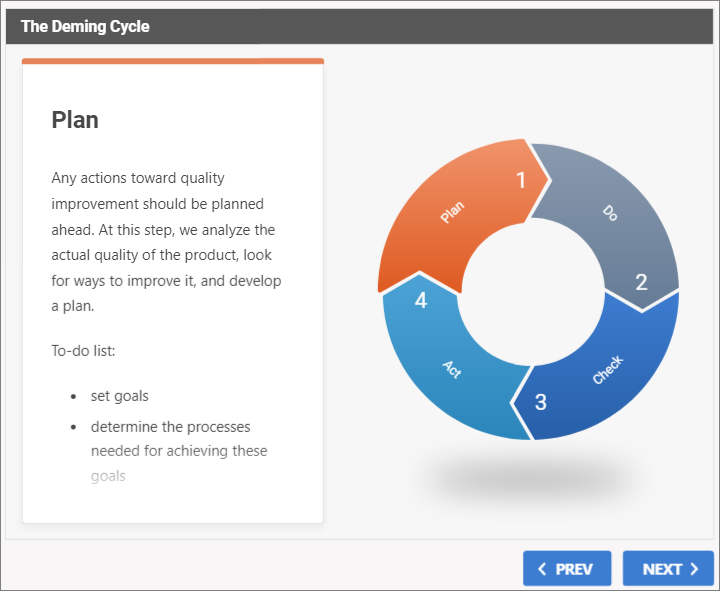
Process Position
- To indicate which part of the slide your diagram should be located in, click the Properties button on the toolbar.

- In the Process Position drop-down list, choose the diagram position on the slide: Left or Right.
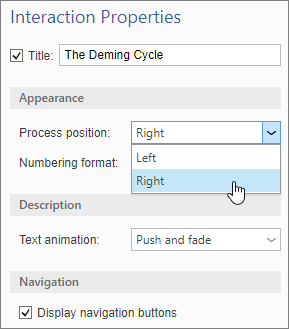
- Click the Apply and Close button on the toolbar to save the changes.
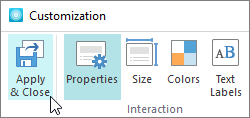
Numbering Steps
- To choose the way the diagram steps are numbered, click the Properties button on the toolbar.

- In the Numbering Format drop-down list, choose the numbering type: Arabic numerals (1, 2, 3), Latin letters (A, B, C), Roman numerals (I, II, III). If you do not need the numbering, select No.
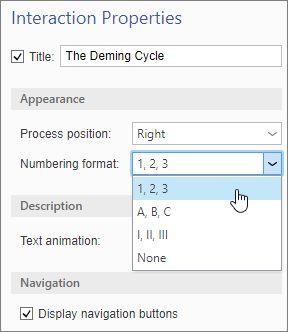
- Click the Apply and Close button on the toolbar to save the changes.

The selected format will change the numbering type on the diagram.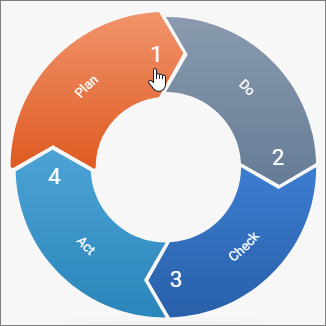
Adding Steps
- To add a new step, click the Add step button on the toolbar.

- A new step will appear in the Steps list and on the diagram.
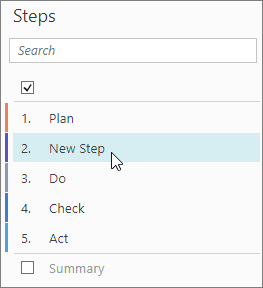
- Enter the step title and description. This is what the users will see on the slide for this step.
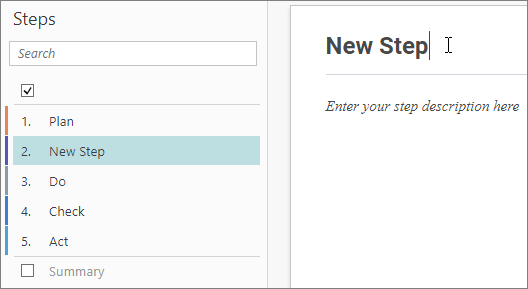
- You can change the step title right on the diagram. To change it, double-click the step.
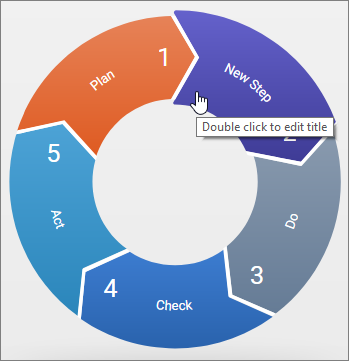
In the pop-up, enter the new title. It may differ from the step title entered in the text editor.
Add extra content to the step description: images, videos, an audio track, rich text, characters, a background or objects. To do this, go to the Insert tab and select the option you need. To make the tab appear, place the cursor into the step description area.
 You can add up to 20 steps.
You can add up to 20 steps.
Changing Step Color
To change the step color, select it in the Steps list and click the Step Color button on the toolbar.
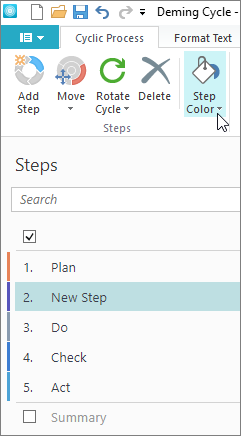
Choose one of the default colors in the Theme Colors drop-down.
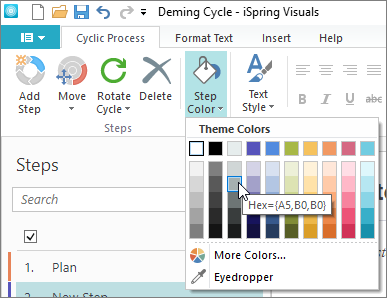
If you can't find an appropriate color, pick one in the More colors window.
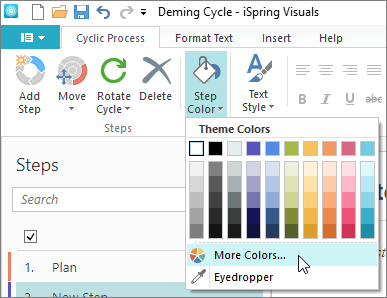
In the Colors window you can:
- Choose one of the default or recently used colors.

- Choose a color on the color scale.

- Enter the RGB values.

- Enter the color code manually.

- Use the Eyedropper tool.
Select the step you want to change the color of.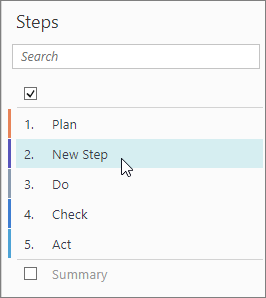
Click the Eyedropper tool icon.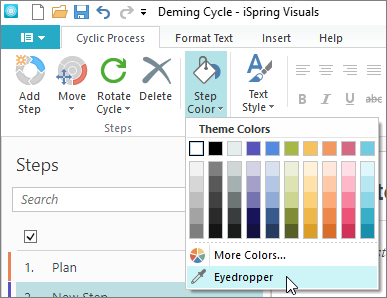
Place the tool onto the slide area you want to copy the color of. It can be an area outside of the iSpring Visuals window.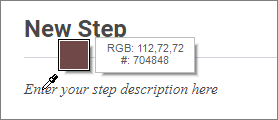
Left-click and the highlighted step will change its color.
Arranging Steps
The order presented in the Steps list will be the order the users see the steps in when navigating inside the interaction using the navigation buttons (Next and Previous).
To change the order of the steps, select a step and drag it along the Steps list to place it in another position. To select multiple steps at once, hold the Ctrl button on the keyboard and select the steps.
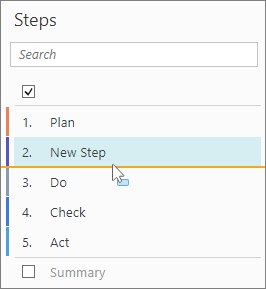
You can move the steps using the Move up and Move down buttons in the context menu. To open the context menu, right-click the step in the Steps list.
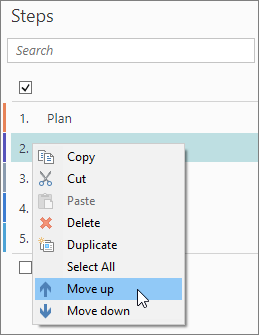
The third way to move the steps on the diagram is to select a step in the Steps list and click the Move button on the toolbar. In the drop-down, select the direction of movement: Clockwise or Counterclockwise.
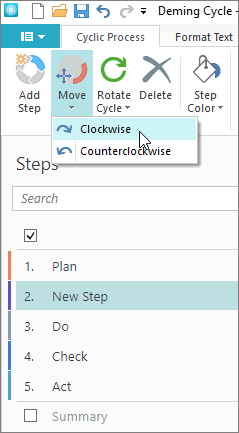
Duplicating Steps
To create a duplicate of a step, click the Duplicate button in the context menu. A step with the same title, description, and color will appear on the diagram and in the Steps list.
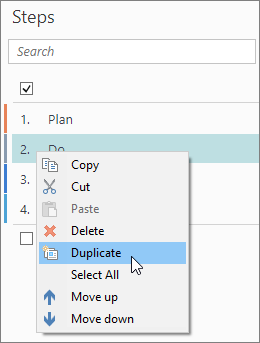
Deleting Steps
To remove a step, select it in the list and click the Delete button on the toolbar, on the keyboard or in the context menu.
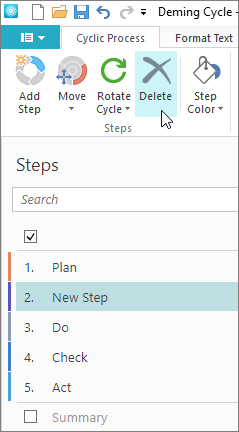
Rotating Diagram
You can turn the diagram to the right and to the left. To do this, click the Rotate Cycle button on the toolbar, choose the direction to rotate the diagram: To Right or To Left, and the angle to turn the cycle at.
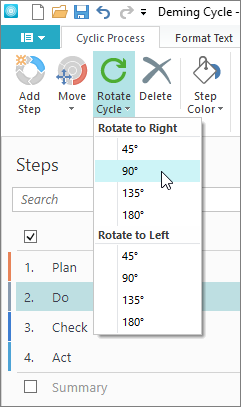
Adding Introduction and Summary
To add an introduction and a summary to your interaction, tick the boxes above and below the steps in the Steps list.
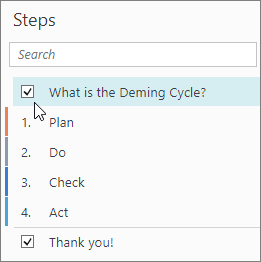
Add a title and a description to the introduction and the summary in the editing area.
